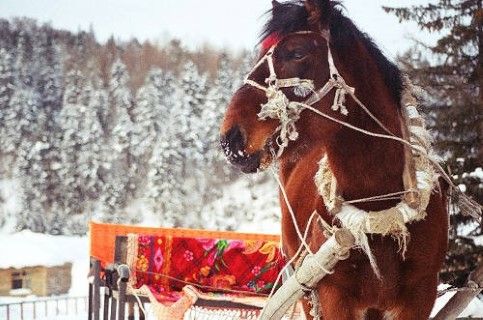Heihe horses originated in Heihe City, China. Heihe is
situated alongside Heilongjiang, a well-known river basin. The primary sources
of livelihood for the inhabitants of Heihe include transportation and
agriculture -- horses are important in the accomplishment of both tasks.
Heihe is a place where the temperature is rather
unpredictable. This has made the Heihe breed relatively adaptive to sudden
shifts in temperature. Since they are well-adapted to variable climates and
they can combat diseases well. Unless overtaxed and overworked, they stay strong
and healthy.
Mongolian horses were initially sent to Heihe city by the
Soulun nation. This was followed by Russians sending horses of an unknown breed
after 1910. Orlov trotters were the next breed of horses sent to Heihe city,
followed by Anglo-Norman stallions, Anglo-Arab stallions, and the Percherons.
Crossbreeding of these horses (although not all at the same time) resulted in
Heihe horses.
The Heihe breed, however, was not fully recognized as an
actual breed until the formal establishment of farms, such as the Keshan stud
farm and the North Horse farm in Heihe city. Today modern Heihe horses are
still used for riding, draft, and farm work.
Their head and neck are both medium in size and length. They
are known for big eyes and elongated ears, which are emphasized because of the
medium-sized neck. Their forelegs are much more pronounced than its cannons.
Their hock, meanwhile, is usually bent and unpronounced. In addition, their
withers are usually high and sloping downward to the croup, which is much
lower. They usually bay colored, although they can be seen in chestnut, gray,
or black.
They are very compliant and yielding. They are usually
employed for pack and draft work. They are relatively enduring, which makes
them perfect for long and tiring travel. In Heihe, they are still used for farm
work.

